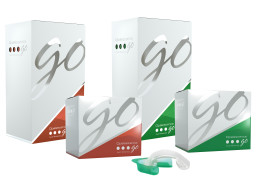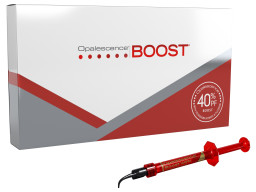Why LED Lights Are Unnecessary for Effective Teeth Whitening: Debunking the hype behind a modern dental procedure
Tuesday, March 25, 2025
In the world of modern dental care, teeth whitening has become an increasingly sought-after procedure, fueled by the desire for radiant smiles. A prominent feature of many contemporary teeth whitening treatments is the utilization of LED lights. These lights are believed to enhance the whitening process, promising faster and more remarkable results. However, as dental professionals, it is crucial to critically examine the science behind these claims and consider whether LED lights truly play an indispensable role in effective teeth whitening.
The science of teeth whitening
Before delving into the role of LED lights, let's revisit the foundation of teeth whitening. Tooth staining, aging, and lifestyle factors contribute to teeth discoloration. Two primary methods address this issue: chemical whitening agents and physical abrasives. Understanding these methods is pivotal to assessing the legitimacy of LED lights in the whitening process.
The perceived role of LED lights in teeth whitening
LED-assisted teeth whitening has gained immense popularity in dental practices and commercial products alike. The procedure typically involves applying a whitening gel to the teeth and then exposing them to LED light. Proponents claim that the light accelerates the whitening process and delivers superior outcomes. Studies have repeatedly shown that UV or LED lights do not improve the efficacy of whitening treatments.1 Since then, the value of using UV or LED lights for better whitening has been called into question.
Debunking the hype: examining the evidence
Scientific studies have examined the purported benefits of LED lights in teeth whitening. While some research suggests a potential increase in teeth whitening efficacy, other research shows there is no change with the light.1–5 Therefore, the question arises: do LED lights truly outperform traditional methods?
A deeper look into these studies reveals that variables such as whitening agent concentration, formulation, and treatment duration exert substantial influence on outcomes. The psychological impact of LED lights, with their association to advanced technology, may inadvertently contribute to perceived better results. As dental professionals, it's imperative to interpret research findings objectively and consider the broader context of patient expectations. The best teeth whitening for one person may not always be the same for everyone else, which is why we’ve developed an extensive Opalescence™ teeth whitening product family to meet individual needs.

Alternative factors influencing teeth whitening results
In the pursuit of effective teeth whitening, it is crucial to acknowledge that factors beyond LED lights significantly influence results. The concentration and formulation of the whitening agent are pivotal, as is the duration of the treatment. Moreover, post-whitening oral hygiene practices and lifestyle choices play a pivotal role in maintaining the longevity of whitening outcomes.
Balancing safety and efficacy
Safety is paramount in any dental procedure. Concerns have been raised regarding the potential adverse effects of LED lights on oral tissues and overall health. In fact, some research shows that using a light for whitening can be harmful to lips and gums.2 As dental professionals, it is our responsibility to assess the risks and benefits of LED-assisted teeth whitening and to ensure that patients are fully informed. In this study, the whitening improvement was similar with or without the use of a light.3
Pursuing the best teeth whitening option
As dental professionals, our commitment to evidence-based practice guides us in navigating the evolving landscape of dental care. That is why Ultradent puts so much effort into testing our Opalescence teeth whitening product line. Some in-office whitening procedures rely on lights or lasers to “activate” the chemical whitening agent. However, Opalescence™ Boost™ in-office whitening relies solely on chemical activation. Studies have confirmed that the whitening agent is effective without any lasers.4,5 While LED lights have gained popularity in teeth whitening treatments, independent researchers indicate that the results may be due to dehydration and often relapse to a darker color hours or days later. The science of teeth whitening underscores the significance of other factors such as whitening agent formulation, concentration, duration of use, and post-treatment care.
We encourage our fellow dental professionals to continue critically evaluating new technologies and treatments, ensuring patients receive the best care based on sound scientific evidence. Let us remain vigilant in separating hype from reality, all while prioritizing patient safety and long-term dental health.
For more information, check out Opalescence Boost today.
- Maran BM, Burey A, de Paris Matos T, Loguercio AD, Reis A. In-office dental bleaching with light vs. without light: A systematic review and meta-analysis. J Dent. 2018;70:1–13. doi:10.1016/j.jdent.2017.11.007
- Bruzell EM, Johnsen B, Aalerud TN, Dahl JE, Christensen T. In vitro efficacy and risk for adverse effects of light-assisted tooth bleaching. Photochem Photobiol Sci. 2009;8(3):377–385. doi:10.1039/b813132e
- Tsujimoto A, Jurado CA, Sayed ME, et al. Influence of light irradiation for in-office tooth whitening: A randomized clinical study. Am J Dent. 2021 Aug;34(4):201–204.
- Hein DK, Ploeger BJ, Hartup JK, et al. In-office vital tooth bleaching—what do lights add? Compend Contin Educ Dent. 2003;24(4A):340–352. Kugel G, Papathanasiou A, Williams AJ 3rd, Anderson C, Ferreira S. Clinical evaluation of chemical and light-activated tooth whitening systems. Compend Contin Educ. 2006;27(1)54–62
- Kugel G, Papathanasiou A, Williams AJ 3rd, Anderson C, Ferreira S. Clinical evaluation of chemical and light-activated tooth whitening systems. Compend Contin Educ. 2006;27(1)54–62.

By Casey Fenich
As the Global SEO Manager at Ultradent, Casey combines over a decade of digital marketing expertise with a passion for storytelling. By day, Casey spearheads global SEO strategies, and by night, engages in self-publishing, crafting captivating narratives for diverse audiences.


